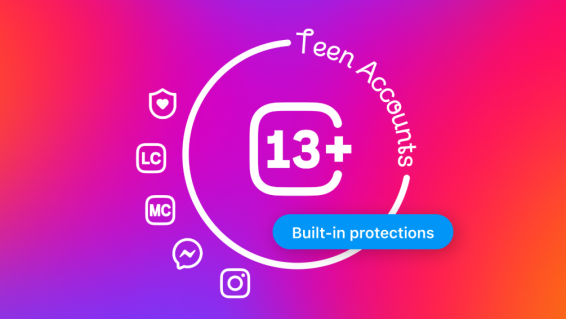
Instagram’s new PG-13 content rules will hit adults harder than kids

Instagram has announced new restrictions for teenage account holders in English language markets that will ensure they only see content deemed to fall under the PG-13 rating currently used in movies.
Accounts held by all Instagram users under 18 will be automatically placed under this setting, and teenagers won’t be able to opt out without parental consent. There’s also an even stricter setting for parents who feel that PG-13 is too racy for their children.
While the restrictions are aimed at teenagers, it will be adult account holders who will see the biggest impact.
The rules have come into effect just weeks before Instagram and other social media platforms are set to be banned entirely for under-16s in Australia.
Under the new rules, Instagram users under 18 will not be able to follow accounts that Meta has found to “regularly share age-inappropriate content”, or if their name or bio info “suggests the account is inappropriate for teens.” If the underage user is already following an inappropriate account, they won’t be able to “see or interact with their content, send them DMs, or see their comments under anyone’s posts.”
Enjoying Mumbrella? Sign up for our free daily newsletter.
Meta said it won’t recommend these accounts to teens, and will make it harder for teens to find these accounts in the search function. If someone sends them a message with content from these accounts, they won’t be able to open it.
“These protections work both ways,” Meta said. “These accounts won’t be able to follow teens, send them DMs, or comment on their posts.”
In effect, these accounts will completely disappear from the view of anyone under 18, meaning there may soon be Instagram users with millions of followers, with a reachable audience of thousands. A user’s follower count will become a wildly misleading metric.
This diminished reach will cause chaos at the major record labels; at film studios; for influencers who rely upon teenager consumers; for anyone who enjoys delivering straight-to-camera confessions without feeling the need to censor their four-letter words. Artists like Sabrina Carpenter and Miley Cyrus will have to revert back to their Disney Channel status in order to speak to their audiences. Advertisers will have to do their own analytics to assess an influencer’s actual audience.
Under the new restrictions, parents in the arts who aim at an adult audience won’t be able to leave a comment under their own child’s post — unless they take the PG-13 filter off completely, which might not be optimal.
This is the natural end-run to what has been a slow erosion of the content available to underage users since Meta introduced Teen Accounts last September.
Instagram already claims to hide “the recommendation of sexually suggestive content, graphic or disturbing images, and adult content like tobacco or alcohol sales from teens” — which seems sensible — and also blocks any underage searches that relate to suicide, self-harm, or eating disorders (which runs the risk of invertedly blocking vital educational tools).
Now, Instagram will ban any posts or accounts that use “strong language”, show “certain risky stunts” (like buying tech stock?) and even “posts showing marijuana paraphernalia” — while search restrictions will be expanded to include “a wider range of mature search terms, such as ‘alcohol’ or ‘gore’”.
If (read: when) teenagers try to dodge these restrictions, Meta promises it will use “age prediction technology to place teens into certain content protections — even if they claim to be adults.” This also raises numerous questions around privacy and race-related machine bias.
In developing these policies Meta invited “thousands of parents around the world” to rate various Instagram content as being appropriate or inappropriate for teens.
“We received over 3 million content ratings from parents and incorporated this feedback when refining our age-appropriate guidelines”, the company said.
“We’re encouraged to see that this feedback, and the changes we made in response to it, made parents more comfortable with content recommended to teens”
This seems at odds with the blanket PG-13 guidelines it claims to adopt in the opening line of its announcement.
Users can also flag content they feel doesn’t fall under the guidelines, allowing parents to effectively police other people’s children.
These updates will begin rolling out today in Australia, Canada, the UK, and the US, with the new system fully rolled out by the end of the year. Meta says it will then make the changes globally.
Be warned: the final line of the official announcement suggests these changes are coming for Facebook, too.
“Looking ahead, we plan to roll out these changes globally, apply more of the new protections to teens who claim to be adults, and on Facebook, add additional age-appropriate content protections for teens.”
In protecting teenagers, Meta may have unwittingly turned the entire Instagram platform into the Mickey Mouse Club.
As one ancient philosopher asked: If an influencer does the hot chilli challenge and no teenagers see it – did it really happen?






I get why young children should have limited access, but all I see coming up is greater friction for adults engaging in these channels while the target market shifts to some hidden Twitch-type environment and carries on as before.
Very nicely parsed Nathan. I note that since Sep 13 TikTok in the US has new policy with regards content covering aspects of the Middle East. Given how crucial this channel was in harnessing the opinion of young people on the matter, I wonder if they’re going to notice the change.